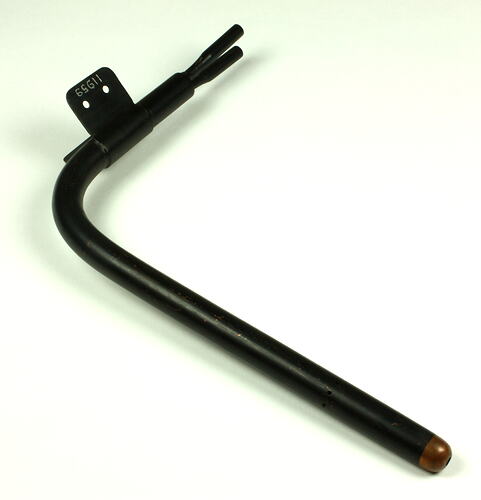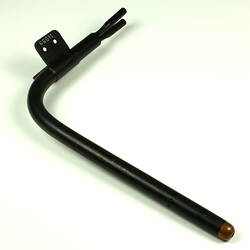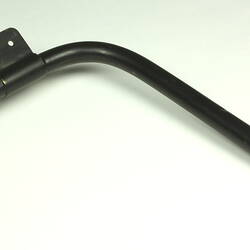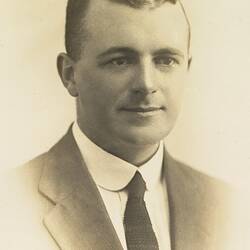Summary
Air speed indicator tube with co-axial copper pipes for measuring the airspeed of an aircraft. Airspeed is a function of the difference between the stagnation pressure or total pressure sensed in the central pitot tube which has a single hole facing forward at the tip of the pipe and the static pressure sensed through holes around the circumference of the outer tube. Air speed was displayed by an indicator needle on a dial gauge actuated by a diaphragm connected to the pitot and static pressure tubes. This air speed indicator was associated with the donor's son, Basil Watson, and was possibly used in the Sopwith type single-seat biplane he constructed in July-October 1916.
Basil Watson was introduced to flying by Harry Hawker during an Australian publicity tour in early 1914, and subsequently travelled to England with Hawker, where he undertook flying lessons and worked as an engineer with the Sopwith Aviation Company. After the outbreak of WWI he was seconded to the British Government as a military test pilot, based at Brooklands aerodrome. He was severely injured in a crash after suffering an engine failure on take-off during a test flight in June 1915, and returned to Australia 12 months later, after being declared medically unfit for further military service. After constructing his own biplane from scratch at his parent's home in Elsternwick, in little more than 3 months, Watson piloted the aircraft on pioneering flights to Bendigo, western Victoria and Mount Gambier. He performed the first public aerial acrobatics flying demonstrations for crowds of spectators in Melbourne and country towns, and flew the first official airmail between Mt Gambier and Melbourne in February 1917. He was killed on 28th March 1917 when his aircraft crashed in shallow water in Port Phillip Bay, after a structural failure occurred as he performed an aerobatics display over Point Cook, Victoria. His death was the earliest recorded aviation fatality in Australia.
Presented to the Museum in 1919 by James Isaac Watson, father of Basil Watson, together with the Gnome aero engine, several spare parts and other items salvaged from the wreckage of the crashed aircraft. It is not known whether this air speed indicator was recovered from the crashed plane or was a spare component. Amongst the other components donated is a second air speed indicator of similar design but with aluminium tubes (ST 11960).
More Information
-
Collection Names
-
Collecting Areas
-
Acquisition Information
Donation from James I. Watson, 28 Oct 1919
-
Classification
-
Category
-
Discipline
-
Type of item
-
Keywords
Aeroplane Components, Aircraft, Aircraft Instruments, Aircraft Manufacture, Aviation, Aviation Pioneers, Biplanes, Pitot Tubes




